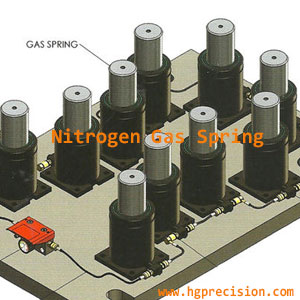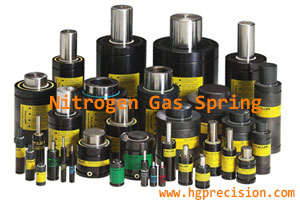1.Nitrogen gas springs can be roughly divided into four categories according to its basic structure:
- ISO International Standard Type

- Compact Structure Type
- Ultra Compact Type
- Extra Thin Structure Type

- TU series: It is also an international standard series: it is also the world's first nitrogen gas spring series model, all dimensions comply with ISO 11910 gas spring standards.
- K series: In the TU series, this is a low-profile nitrogen gas spring with a bottom mounting screw hole and a side inflation port, which can be used to connect to the pipeline system.
- Powerful X series: This is the shortest and strongest nitrogen gas spring for plunger rod sealing in the world, and it has a bottom mounting screw hole and a side inflation port, which can be used to connect to the pipeline system.
- Powerful GX series: This nitrogen gas spring is a new model launched by KALLER, which is longer than the X series, and it has a bottom mounting screw hole and a side inflation port, which can be used to connect to the pipeline system.
- CU series: It is a nitrogen gas spring with a very compact structure. Its smaller outer diameter of the cylinder can provide a larger spring pressure.
评论
发表评论